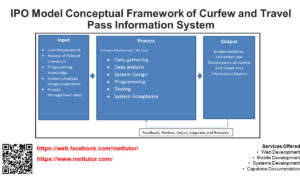Medical Laboratory Information System Related Literature
FOREIGN LITERATURE
University of North Carolina, USA
This article describes the rationale, processes, technology, and results of creating of a paper-based rounds report that is now used by our entire institution for efficient inpatient work rounds and checkout rounds that are routinely done in virtually every hospital, both academic and private, in the US. The results of a survey of clinicians suggests that printed rounds reports have markedly improved rounding efficiency, saved substantial amounts of physician time, standardized checkout processes, and improved patient safety.
Lab Health LIS
While most Clinical Labs are “similar” we have found that no two are exactly alike. Each lab wants a unique software solution, one that helps differentiate it from their many competitors. Quality Software Systems’ Lab Health LIS has been designed to help create a truly customized solution that makes your lab more productive and your service to your clients more distinctive.
Our Laboratory Information System (LIS) is made for the fast, efficient processing of specimens from the provider’s collection point, through the lab equipment interface, and to final billing. Interfaces can be developed for any analyzer, payment clearinghouse, or information interchange need. The System supports laboratories providing diagnostic analytic services in the full range of departments including chemistry, toxicology, hematology, serology, cytology, histology, pathology, microbiology and more. The Computer Based Patient Record Institute (CPRI) was formed by a coalition of health care organizations to promote and develop standards for the use of computerized record systems. This group is actively working on the problems that arise from the use of computerized systems so that the many benefits of the paperless record will not be lost.

Foreign System
Montana Clinical Laboratory Integration Award
Description of the Program
The Montana Public Health Laboratory’s Initiative to Integrate Clinical Laboratories into
Public Health Testing proposes to enhance testing and reporting practices with regards to
antimicrobial susceptibility testing (AST) and sexually transmitted diseases (STDs) for rural,
clinical laboratories and laboratories servicing Native American populations in Montana, North
Dakota, South Dakota, and Wyoming.
A number of compelling factors shaped the focus of this proposal. A 2006 survey of
clinical laboratories in Montana identified significant gaps in knowledge of and adherence to guidelines for AST practices between “urban, large capacity” laboratories and “rural, smaller capacity” laboratories. Public health related testing pertaining to STD testing and reporting in our Native American populations is also a concern, as rates of STDs are higher in this population despite intervention efforts. MT, ND, SD and WY share similar demographic statistics that contribute to common challenges facing our rural, clinical laboratories. Providing educational opportunities to this large geographic, sparsely populated area is a challenge, as many rural laboratories do not have the staffing or resources to attend off-site workshops and seminars. Activities funded by this initiative will increase the knowledge base of clinical laboratory professionals while improving their ability to conduct public health related testing and reporting in these frontier states, as we work toward a National Laboratory System.
Year 1 Objectives:
• Assess status of AST testing, barriers to compliance with AST standards, and training needs of small, rural clinical laboratories, in MT, WY, ND, and SD. Provide and/or assist in training and practical application of AST standards in order to increase adherence to voluntary guidelines.
• Assess status of sexually transmitted disease (STD) testing at clinical laboratories that service Native American populations in MT, WY, ND, and SD and promote adherence to testing and reporting standards.
Years 2 and 3 objectives:
• Continued assessment of AST practices through yearly surveys and refined AST educational opportunities targeting identified needs.
• Review status of electronic laboratory data reporting from rural, clinical laboratories in MT, WY, ND and SD and find common ground that will promote reporting tests of public health concern to local public health authorities and improve rates of submission of isolates to state public health laboratories.
• Assess status of public health knowledge, communication, and training needs for rural, clinical laboratories in MT, WY, ND, and SD and establish sustainable mechanisms to strengthen/promote relationships between rural, clinical laboratories and local public health authorities.
Foundation for Health Care Quality:
• Objective I
To implement a quality management system in Washington State to assess the inter-laboratory variability of clinical microbiology laboratory practice, policies and processes in small hospital laboratories
• Objective II
To implement a platform for a quality management system in small hospital laboratories in Washington for service delivery, customer service, reduction of variability that occurs in laboratory practice, policies, and processes.
• Objective III
Plan and implement a quality management system in collaboration and consultation with the Directors of the Alaska, Oregon and Washington State Public Health Laboratories to: a) provide a platform for continuous improvement in service delivery, communication with clinical laboratories, customer services, and processes in their laboratory and, b) to study factors that impede the clinical laboratories in each state from adhering to voluntary national laboratory practice guidelines in microbiology, reporting of results, and submission of isolates and specimens to the state public health laboratory
Practice Management
Health Fusion’s Practice Management System with a fully integrated EHR and clearinghouse simplifies patient registration, scheduling, billing, and reporting for Revenue Cycle Management.
Data in an electronic medical record
• Patient demographics
• Medical history, examination and progress reports of health and illnesses
• Medicine and allergy lists, and immunization status
• Laboratory test results
• Radiology images, x-rays, computed tomography – CTs, MRIs, etc)
• Photographs, from endoscopy or laparoscopy or clinical photographs
• Medication information, including side-effects and interactions
• Evidence-based recommendations for specific medical conditions
• A record of appointments and other reminders
• Billing records
• Eligibility
• Advanced directives, living wills, and health powers of attorney
Local Literature
Wikipedia
Pertinent up-to-date, confidential patient information is converted to a written text document by a medical transcriptionist (MT). This text may be printed and placed in the patient’s record and/or retained only in its electronic format. Medical transcription can be performed by
MTs who are employees in a hospital or who work at home as telecommuting employees for the hospital; by MTs working as telecommuting employees or independent contractors for an outsourced service that performs the work offsite under contract to a hospital, clinic, physician group or other healthcare provider; or by MTs working directly for the providers of service (doctors or their group practices) either onsite or telecommuting as employees or contractors. Hospital facilities often prefer electronic storage of medical records due to the sheer volume of hospital patients and the accompanying paperwork. The electronic storage in their database gives immediate access to subsequent departments or providers regarding the patient’s care to date, notation of previous or present medications, notification of allergies, and establishes a history on the patient to facilitate healthcare delivery regardless of geographical distance or location.
REVIEW OF RELATED LITERATURE AND STUDIES
This chapter places the current study into the context of previous, related research. It consist of both related studies and literature that are related to the present study.
Related Literature
This section presents both foreign and local related literatures relevant to the study. This relevance is shown by the proponents in order to give more reason and understanding of the proposition. Tom DeMarco & Tim Lister of Peopleware, 2nd Edition, Dorset House cited that,
“Companies that sensibly manage their investment in people will prosper and eventually succeed in the long run.”
The authors of the book state that if companies manage investment in people wisely, it will reap the rewards in the future as the company grows. It will succeed in the long run because the people within the company are the ones contributing to the growth of the company. Thus entails the importance of taking care of the people within the company. Caper Jones of A Practitioners Approach, Fifth Edition cited that,
“Good estimating approaches and solid historical data offer the best hope that reality will win over impossible demands.”
The author of the book stated that in business, good estimating approaches and solid historical data are beneficial tools to be taken advantage of. As to with research studies, one does not jump to start right away, but the approach should start with solid historical data so that awareness of the study be met with a hopeful result that will win over impossible demands. Carl P. Zeithami & Thomas S. Bateman of Management Function and Strategy cited that,
“In today’s business environment, planning has become a widespread management function, involving people throughout the organization in the analysis, identification, and selection of goals and priorities.”
Authors of the book state that planning is very important for every individual, work group, or organization because it helps the systematic process during which decisions are made about the goals and activities, just like companies using a manual system method to carefully plan on what would be the possible solution to make the system work faster so that there is less probability of errors in the activities, and in considering the need for a computerized system in order to better answer the problem.
Related Studies
This section presents other related studies by the people who conducted studies similar to the proponents that will also greatly help in the progress of the study. And it will also help the understanding of the proposition. Mark Dominic dela Torre stated that,
“The concepts of a simple dream, a determination, quality and perseverance are the forefront to any business that leads to successful outcome.”
Having the concept of determination and assuring quality service to customers, the proponents created an online software program to cater to company employees and agents in making their job easier and more efficient thus delivering quality service and maximizing the potential of the business. Gaudelyn C. Pantilo stated that,
“The increasing demand gave us the idea how to deal with our ongoing progress. It motivates us to meet their need efficiently.”
The company needs to continually diversify to meet the ongoing demands of the business sectors today. Thus, proponents created an online software program for the company to maximize their work force, easily tack all sales activities and to meet the demands of this ever changing economy
Kneener Lim and Antonette Goyenechea stated that,
“Records security is also one of the primary objectives and all the information received from its clients are confidential.”
The proponents created and designed a software program for the company to make the system perfect where all the sales and client records should be kept, thus giving the assurance that these files are secured and accessible for the advancement of the company.
You may visit our facebook page for more information, inquiries and comments.
Hire our team to do the project.



